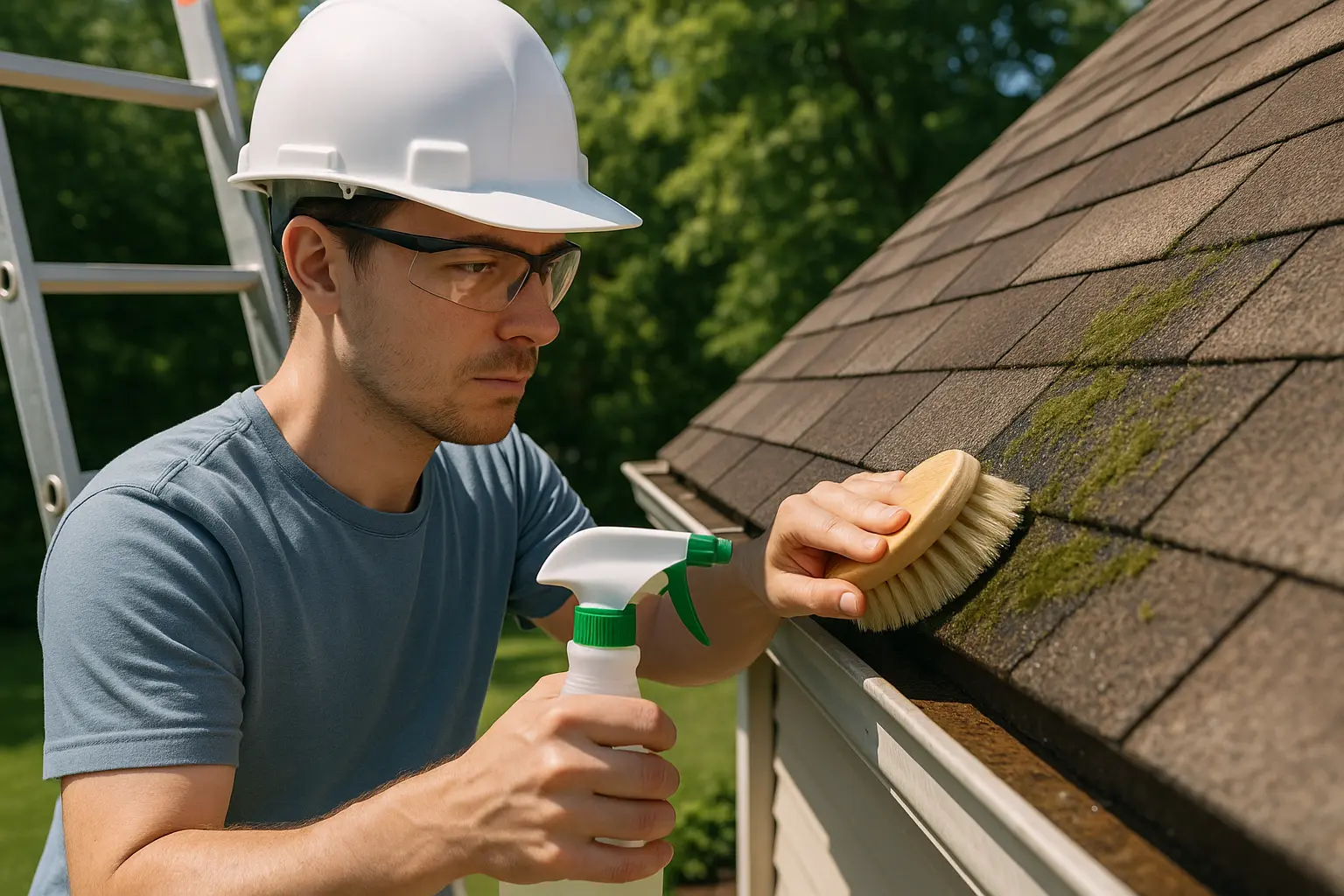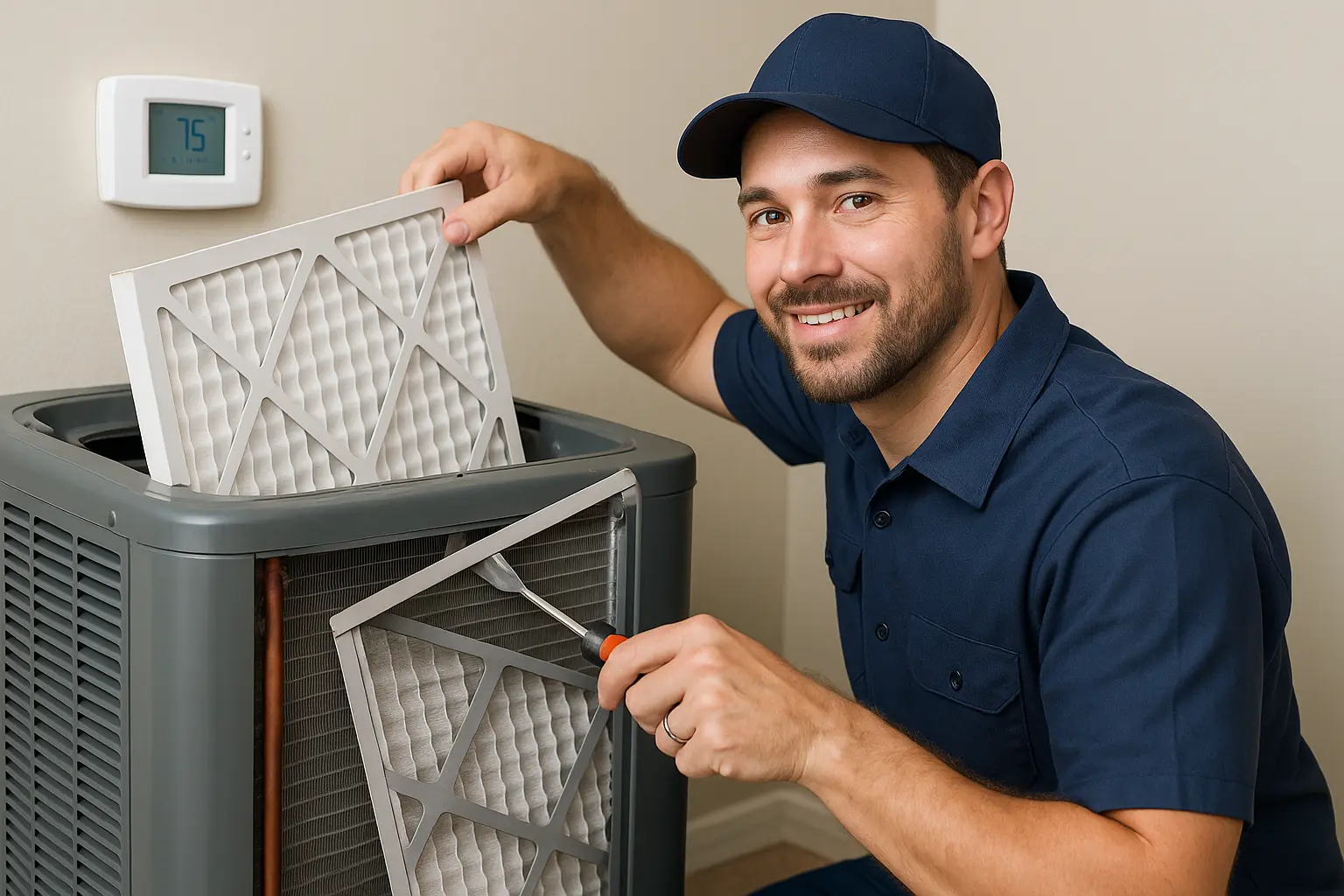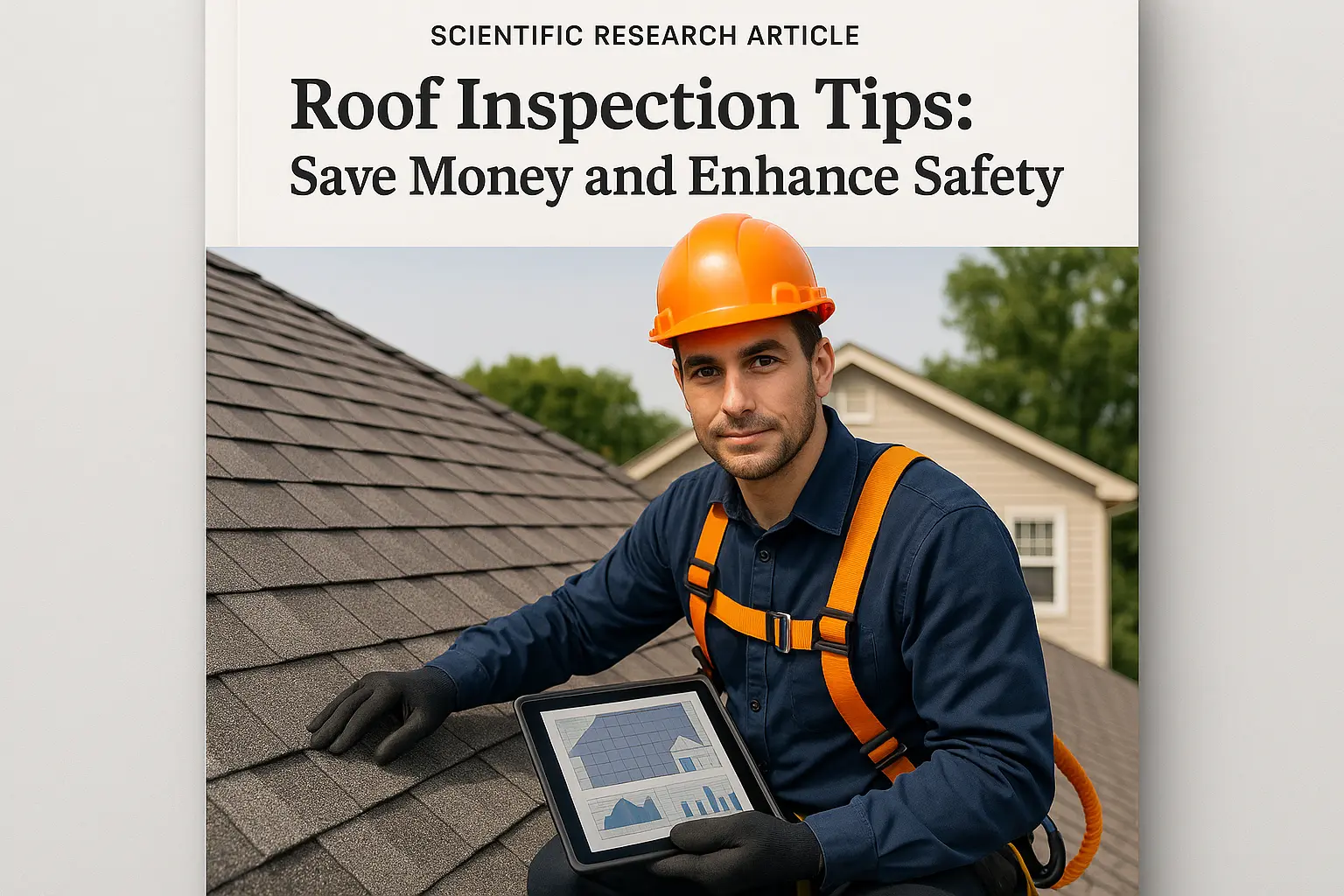Introduction
Keeping your roof in top condition is a major part of home care. Over time, natural debris and other unwanted particles settle on roof shingles, which not only dulls their appearance but could eventually harm the structure. A well-planned cleaning routine is vital to maintaining both the look and the strength of your home. In this article, we break down practical techniques, easy-to-follow advice, and the reasons behind routine roof cleaning. You’ll learn why debris builds up, discover proven cleaning methods, and explore simple steps to stop problems before they start.
Understanding Roof Debris
Causes of Debris Accumulation
There are several factors behind the buildup on your roof. Seasonal changes and natural elements work together to cover your roof in unwanted materials. Some common reasons include:
- Falling Leaves: In areas with many deciduous trees, large amounts of leaves drop each year. When these leaves decompose on the roof, they trap moisture and form a sticky layer.
- Moss and Lichen Growth: Damp and shaded spots provide an inviting home for moss and lichen. Over time, these organisms can discolor your roof and weaken its surface.
- Dirt and Dust on the Wind: Fine dust and airborne particles also settle on the roof. This accumulation can combine with other materials, forming a persistent coat that is tough to remove.
Every factor mentioned above not only lowers your roof’s visual charm but may also affect its overall durability and functionality.
Impact of Debris on Shingles
The gathering of debris causes more trouble than just making your roof look unkempt. Here’s what can happen:
- Moisture Trapping: When leaves and moss cover the shingles, they trap water. The lingering moisture encourages the spread of algae, which intensifies degradation.
- Structural Strain: With moisture seeping in under the shingles, there’s a risk of leaks, water stains, and even wood rot. Delaying cleaning can spiral into expensive repairs down the line.
- Hindered Water Flow: Shingles are designed to channel water off the roof swiftly. When debris clogs this process, water can pool and potentially seep under the roofing system, endangering the waterproof barrier.
Real-life examples show that neighborhoods with heavy leaf fall often face increased roof leakage and damage during rainy spells because debris blockage makes the roof less effective.
Safety Concerns When Dealing with Debris
Beyond appearance and structural risks, debris poses serious safety hazards. Roofs slick with moss, algae, or accumulated dirt can be dangerous, especially on wet days. Here are the main issues:
- Slippery Surfaces: A roof covered in moisture and debris makes for a dangerous climbing area. This increases the chance of falls, particularly if you are cleaning the roof yourself.
- Weakened Roofing Material: Moisture trapped by debris can gradually break down the shingle material, making your roof more vulnerable during storms or heavy rains.
- Hidden Damage: Thick layers of debris might mask underlying problems such as cracks or worn spots. Without regular cleaning, these hidden issues can turn into bigger safety risks.
For your safety, it’s important to use sturdy ladders, wear non-slip shoes, and consider hiring a professional if the roof seems too high or dangerous to access.
Effective Cleaning Techniques: moss, dirt, algae, washing
Manual Debris Removal
One of the best ways to restore your roof is by manually removing the debris. This method is straightforward and lets you handle the cleaning process with a hands-on approach. Here’s how to get started:
- Gather the Right Tools: Equip yourself with a broom, leaf blower, or even a specialized roof vacuum. A leaf blower works wonders in shifting light material, while a broom is perfect for heavier buildup.
- Follow a Step-by-Step Plan: First, inspect your roof from below to pinpoint the most affected areas. Then, use a gentle tool to remove loose debris. When scrubbing is necessary, a soft-bristle brush minimizes the risk of harming your shingles.
- Keep Safety in Mind: Using a stable ladder with a good base is critical. It might be wise to ask a friend for help, especially when you need to reach higher areas. Always prioritize safety by wearing proper non-slip footwear and, if needed, a safety harness.
Many homeowners have seen noticeable improvements by following a routine cleaning plan, which not only brightens the roof but can expose minor leaks before they cause bigger issues.
Moss and Algae Treatment
In damp climates, moss and algae can quickly become a nuisance. Treating these issues not only improves appearance but also protects your roof. Here are some easy steps to treat unwanted growth:
- Select a Suitable Cleaner: A diluted bleach solution can be helpful, though there are cleaners made specifically for roofs. Often these products combine ingredients that break down moss and algae without harming the shingle surface.
- Apply with Care: Spray the cleaner generously on the affected areas and let it sit for about 15-20 minutes to loosen the organisms. Use a soft brush to gently scrub the surface while taking care not to damage the shingles.
- Rinse Thoroughly: Once the treatment has done its work, rinse the roof with a gentle stream of water. Avoid the use of high-pressure washing as this could harm the roof’s surface.
Studies show that specialized roof cleaners tend to preserve the original look of your roof better than harsh bleach alternatives. Many homeowners have found that this careful approach helps extend the life of their roof while maintaining its beauty.
Professional Roof Cleaning
There are times when the job is too much to handle by yourself, and calling in professionals is the smartest choice. Experts bring a wealth of experience and use equipment designed to clean without causing damage. Consider these benefits:
- State-of-the-Art Equipment: Professionals use high-grade leaf blowers, telescopic brushes, and scaffolding to safely access and clean every part of your roof.
- Skilled Techniques: Roof specialists know the best ways to recycle cleaning methods based on your roof’s materials. They can tell the difference between delicate surfaces and more robust areas, tailoring their techniques accordingly.
- Saving Time and Reducing Risk: Entrusting the job to professionals not only saves you precious time but also cuts down the risk of injury. If heights or unstable ladders concern you, professional services are a temperature-safe alternative.
Community programs and neighborhood case studies have shown that professional cleaning can noticeably reduce rain-induced leakage and extend roof longevity, making it a worthy investment.
Preventative Measures for a Long-Lasting Roof
Regular Inspections
Routine checks are the backbone of effective roof maintenance. Frequent inspections help you catch minor issues before they evolve into serious problems. To set up an effective inspection routine consider these tips:
- Create a Schedule: Aim to inspect your roof at least twice a year – ideally in the spring and fall. These seasons are perfect for catching issues after the heavy fall of leaves or before the harsh winter conditions begin.
- Invite a Professional: While you can perform basic checks, having a professional look over the roof occasionally may reveal subtle issues like small leaks or early signs of moss and algae growth.
- Keep a Detailed Record: Photograph and log the condition of your roof with each inspection. This record not only highlights recurring issues but also shows the effectiveness of your cleaning efforts over time.
Data from home maintenance surveys suggest that regular inspections can help reduce unexpected repair costs and prolong the life of your roof.
Installing Leaf Guards
Leaf guards are a simple yet effective addition to your roof maintenance routine. By preventing leaves from sneaking into your gutters, they help maintain a cleaner roofing system. Here’s how they aid your roof:
- Boosting Gutter Function: Leaf guards work by keeping gutters clear, which ensures that rainwater flows smoothly away from both the roof and the home’s foundation.
- Maintaining a Cleaner Roof: Reducing debris around the edges means fewer materials will migrate onto the roof shingles. This indirectly supports a maintained and attractive roof appearance.
- Smart Long-Term Investment: While there’s an upfront expense, the savings from lower maintenance costs and reduced water damage make leaf guards a smart buy over time.
Homes with leaf guards often enjoy fewer cleaning woes and less frequent need for deep roof cleaning cycles, keeping repair costs at bay.
Trimming Overhanging Branches
Tree branches that extend over your roof can drop loads of leaves and twigs, adding to the debris. Trimming these branches offers several wins:
- Less Leaf Accumulation: By cutting back overhanging branches, you lower the chances of leaves piling up, which means less frequent cleaning and a healthier roof.
- Preventing Physical Damage: Heavy branches, especially during storms or heavy snow, can fall and cause damage. Regular trimming reduces this risk significantly.
- Optimizing Sunlight Exposure: With fewer obstructions, more sunlight reaches the roof, which helps dry out lingering moisture and discourages the growth of moss and algae.
Many homeowners have enjoyed fewer water leakage issues and a decline in moss growth simply by keeping nearby branches in check, ensuring the roof stays in its best condition year-round.
Insider Advice for moss, dirt, algae, washing
Throughout your roof care journey, regular application of moss, dirt, algae, washing can keep your shingles in top shape. It’s wise to opt for methods that use gentle cleaning agents, as overly harsh chemicals may harm your clean roof shingles. Homeowners testing moss, dirt, algae, washing frequently report a noticeable improvement in roof durability and curb appeal as the balance of cleaning and care is maintained. Integrating moss, dirt, algae, washing as part of your bi-annual maintenance routine can help prevent severe buildup and extend the life of your roof. When you combine regular checks with smart moss, dirt, algae, washing habits, you protect your home investment with minimal effort.
Conclusion
Taking proper care of your roof goes far beyond keeping up appearances—it’s a key part of preserving your home’s integrity. Understanding the different ways debris collects, from falling leaves to the unwanted growth of moss and algae, is the first step in choosing the right cleaning plan. Whether you decide on manual removal, targeted treatment for biological growth, or even professional cleaning, you make a wise investment in avoiding costly future repairs.
Preventative methods such as regular inspections, installing leaf guards, and trimming overhanging branches further support the health of your roof. Additionally, incorporating moss, dirt, algae, washing into your routine can offer long-term benefits, ensuring every cleaning session contributes to maintaining a durable and attractive roof.
Your roof is a shield for your home that deserves careful attention. By combining routine cleaning with smart preventative care, you not only enhance your home’s curb appeal but also protect against structural issues. Start nurturing your roof today so that it continues to serve you reliably for many years ahead.





